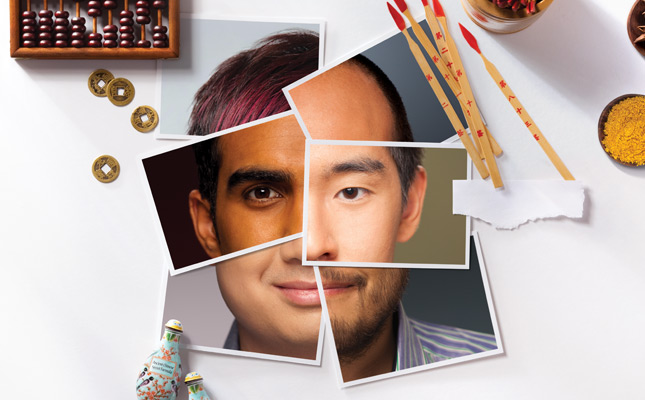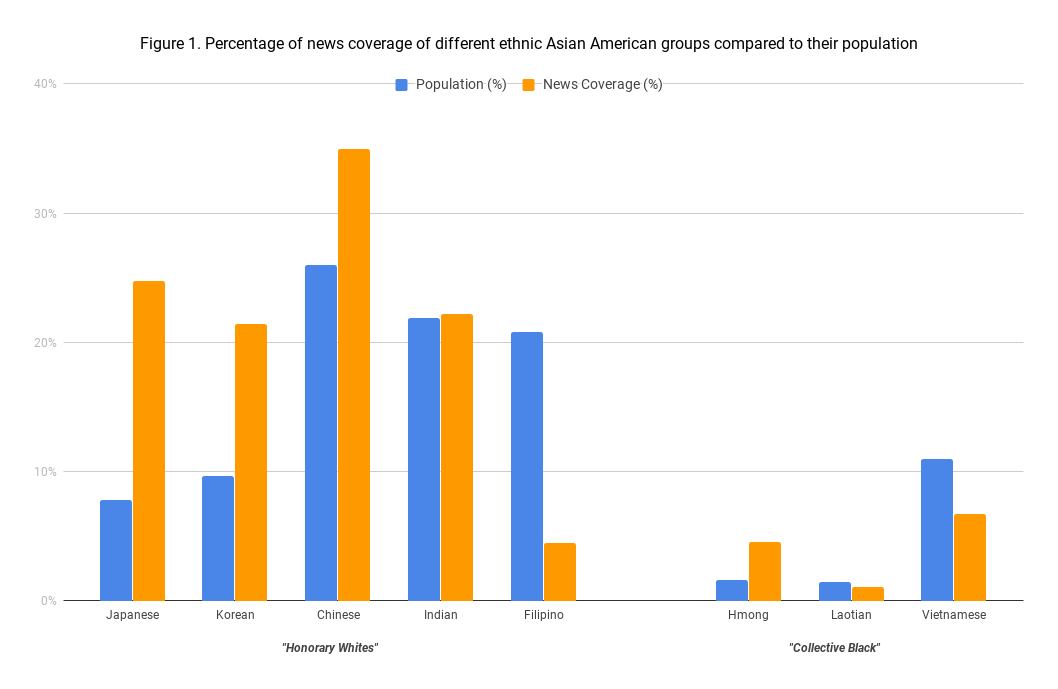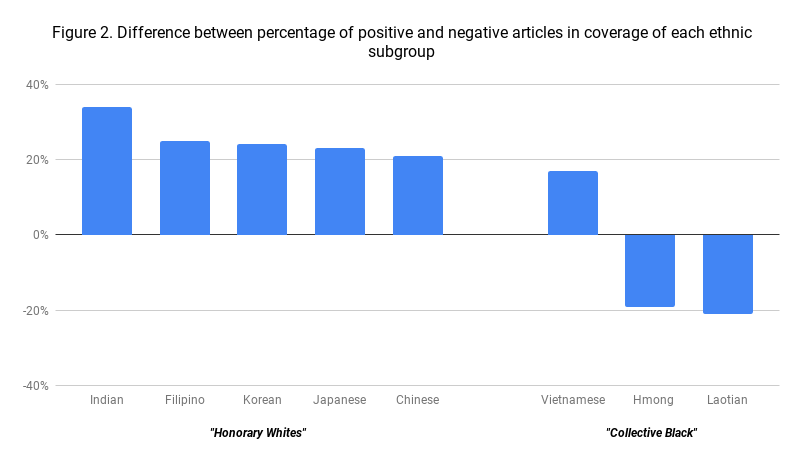Demystifying Asian American Identity
US newspaper coverage of diverse Asian Americans groups, 1999-2018

The recent tensions surrounding the Harvard University affirmative action case have reignited a discussion of the “model minority” stereotype about Asian Americans. Although Asian Americans are frequently associated with the positive traits of education and achievements, they can also be stigmatized as having less favorable “personality traits.”
At the same time, as institutions and the general public seem to pass judgement on Asian Americans as a whole, scholars increasingly call into question the internal coherence of the category itself. Are Chinese Americans the same as Hmong? Are Korean Americans the same as Vietnamese Americans? How similar are Indian Americans and Laotian Americans?
We investigated the prevalence of the model minority myth in the American media, and unpacked the category of Asian Americans to explore coverage of different sub-groups. To do this, we examined New York Times, Wall Street Journal, and Washington Post articles from 1999 through 2018. In keeping with some aspects of the model minority stereotype, we found that the average tone of articles mentioning Asian Americans is more positive than a randomly-selected sample of American newspaper articles, and that media representations of Asian Americans are more positive than those of Latinx Americans.
We also found that words related to “model minority” and “education” are present in 38% and 63% of articles about Asian Americans, respectively. These articles include terms like “excellence” and “achievement” on the one hand, and “student” and “college” on the other.
However, the “model minority” myth does not account for the wide range of disparities among Asian American subgroups. In a prominent article from 2006, sociologist Eduardo Bonilla-Silva suggests that the United States is moving beyond a bi-racial division between blacks and whites to an emerging tri-racial hierarchy, with “whites” at the top, “honorary whites” in the middle, and “the collective black” at the bottom. Though he includes Asian, Latinx, and African American subgroups, we focused on Bonilla-Silva’s categorization of different Asian American groups. We retrieved and analyzed articles mentioning eight such ethnic groups: Chinese, Japanese, Korean, Filipino, Indian Americans (considered “honorary whites”), as well as Vietnamese, Hmong, and Laotian Americans (“collective black”).
To unpack how newspapers cover Asian American subgroups differently, we studied whether news coverage of each group is proportionate to the group’s population. Using data gathered by the U.S. Census Bureau in 2016, we calculated the percentage each group constituted of the total population of these eight groups combined. We then incorporated our data of newspaper articles mentioning each ethnic group and calculated the percentage of news coverage each of these groups garnered relative to the total number of stories about the eight groups all together. Figure 1 shows different patterns of over- and under-representation that tend to correlate with Bonilla-Silva’s categories. Almost all “honorary white” groups were overrepresented, while “collective black” groups were more likely to be underrepresented.

In addition, we examined how each group is represented in the news. Figure 2 shows the difference between the percentage of positive and negative articles referencing each ethnic subgroup. Ethnic groups belonging to the “collective black” category tend to be mentioned in a greater number of negative than positive articles, while groups in the “honorary whites” category are consistently mentioned in more positive than negative articles.

The most positively portrayed ethnic group is Asian Indians, and the most negatively portrayed groups are Hmong and Laotian Americans. When covering Indian American Ami Bera’s campaign for a seat in the House of Representatives in 2010, for example, the New York Times quoted a Republican representative commenting on Bera’s immigrant story: “His parents came from India and he was going to go to the Indian-American community and he is done a very very good job of raising money all over the country.” On the other hand, a Wall Street Journal article describes Hmong resettlement in the US by juxtaposing their life in “tropical Laos” where they “framed their hilly land with crude hand tools” and their life in North Dakota where they had to “adjust to snow and shopping malls at the same time.”
In short, our data shows that the three major newspapers tend to insufficiently and negatively represent the “collective black” groups.
Monolithic categorization of Asian American ethnic groups fails to capture the diverse experiences of each group. Our findings show that this is particularly true in the context of media representation. The US media apply the model minority myth to all Asian Americans even though unequal treatment of individual ethnic groups contradicts the very assumption that all Asian Americans are the same.
-Michelle Hwang, Yiyi Jin & Yvette Shi
Methodological note: We examined 12,610 articles that mentioned Asian Americans and our eight specific Asian American ethnic communities in the New York Times, the Washington Post and the Wall Street Journal from January 1, 1999 to December 31, 2018. We used lexical sentiment analysis, collocation analysis, topic modelling, and regression analysis. For more on our methods, see here. Photo credit: racefiles.com.